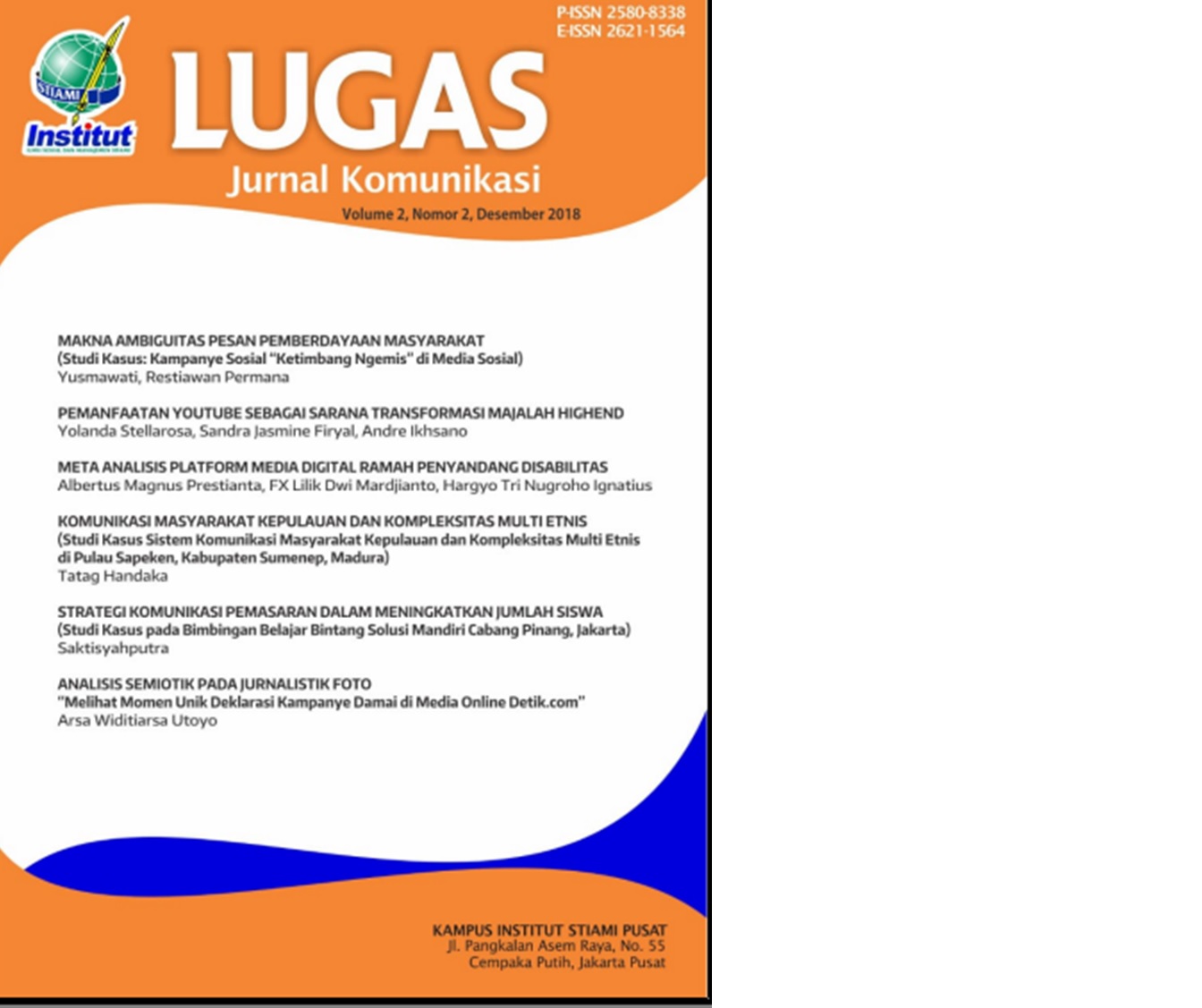Subordinat Perempuan Dalam Aplikasi Percakapan Grup Whatsapp (Studi Kasus Penggunaan Sticker Sensual Di Grup Whatsapp)
DOI:
https://doi.org/10.31334/lugas.v4i1.940Keywords:
subordinate, women, whats AppAbstract
Technological developments open new spaces for interaction. Women are still issues in conversation today. Women are commodity from their bodies. This study discusses the use of whatsapp stickers that use photos of women's bodies, the use of these stickers is widely used in the application group whatsapp, this shows that women are still physically viewed, sexually exploited and placed subordinate in conversation. This type of research is a qualitative descriptive with case study research method, with the critical paradigm. Using interviews as a data collection technique, researchers interviewed group members who often used sensual female stickers to find out the background, motives and tried to uncover the practice of subordination of whatsapp group members who used female body sensual stickers. The results of this study show that the occupants of the group use sensual female body stickers as a joke, a medium of virtualization in the group. For men in the Whats app group, the use of a sensual female body as a conversation sticker, is a form of recognition of the beauty of the body and sexuality appeal of women. Subordinate practice in women occurs in whatsapp 19 Ers group conversations, when women's bodies in various sensual poses uses as mere joke objects.References
Alejandro, Jennifer. (2010). Journalism In The Age Of Social Media, University of Oxford, Reuters Institute for the study of Journalism : Hilary and Trinity Terms & Thomson Reuters Foundation
A. Sultana, “Patriarchy and W omen ’ s Subordination : A Theoretical Analysis.â€
B. Dicks, “Culture on Display The Production of Contemporary Visitability Culture on Display Culture on Display The Production of Contemporary Visitability Culture on Display The Production of Contemporary Visitability.â€
Ghina Novarisa, 2019. “Dominasi Patriarki Berbentuk Kekerasan Simbolik Terhadap Perempuan Pada Sinetron†Jurnal Magister Ilmu Komunikasi Vol.5 (No. 2 ) : 195 – 211 Th. 2019.
J. Cantor, “CONFERENCE PROCEEDINGS Media Violence Aggression Desensitization Fear Hostility Media literacy Media Ratings Television V-chip Violence Unhealthy Effects of Media Violence.â€
Kaplan, Andreas M and Michael Haenlein. (2010). “Users of the world, unite! The challenges and opportunities of Social Mediaâ€. Business Horizons 53 (1): 59–68.
Nasrullah, Rulli. 2016. Media Sosial Perspektif Komunikasi, Budaya, dan Sosioteknologi. Bandung ( I D ): Simbiosa Rekatama Media.
Downloads
Published
Issue
Section
License

This work is licensed under a Creative Commons Attribution-NonCommercial-ShareAlike 4.0 International License.
Copyright Notice
Please find the rights and licenses in LUGAS Jurnal Komunikasi, spirit is to disseminate articles published are as free as possible. Under the Creative Commons license, LUGAS Jurnal Komunikasi permits users to copy, distribute, display, and perform the work for non-commercial purposes only. Users will also need to attribute authors and LUGAS Jurnal Komunikasion distributing works in the journal and other media of publications.
4.Co-Authorship
If the article was jointly prepared by more than one author, any authors submitting the manuscript warrants that he/she has been authorized by all co-authors to be agreed on this copyright and license notice (agreement) on their behalf, and agrees to inform his/her co-authors of the terms of this policy. LUGAS Jurnal Komunikasi will not be held liable for anything that may arise due to the author(s) internal dispute. LUGAS Jurnal Komunikasi will only communicate with the corresponding author.
5.Miscellaneous
LUGAS Jurnal Komunikasi will publish the article (or have it published) in the journal if the article’s editorial process is successfully completed. LUGAS Jurnal Komunikasi editors may modify the article to a style of punctuation, spelling, capitalization, referencing and usage that deems appropriate. The author acknowledges that the article may be published so that it will be publicly accessible and such access will be free of charge for the readers as mentioned in point 3.
Every accepted manuscript should be accompanied by "Copyright Transfer Agreement" prior to the article publication.





.png)

